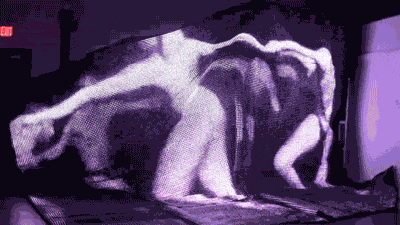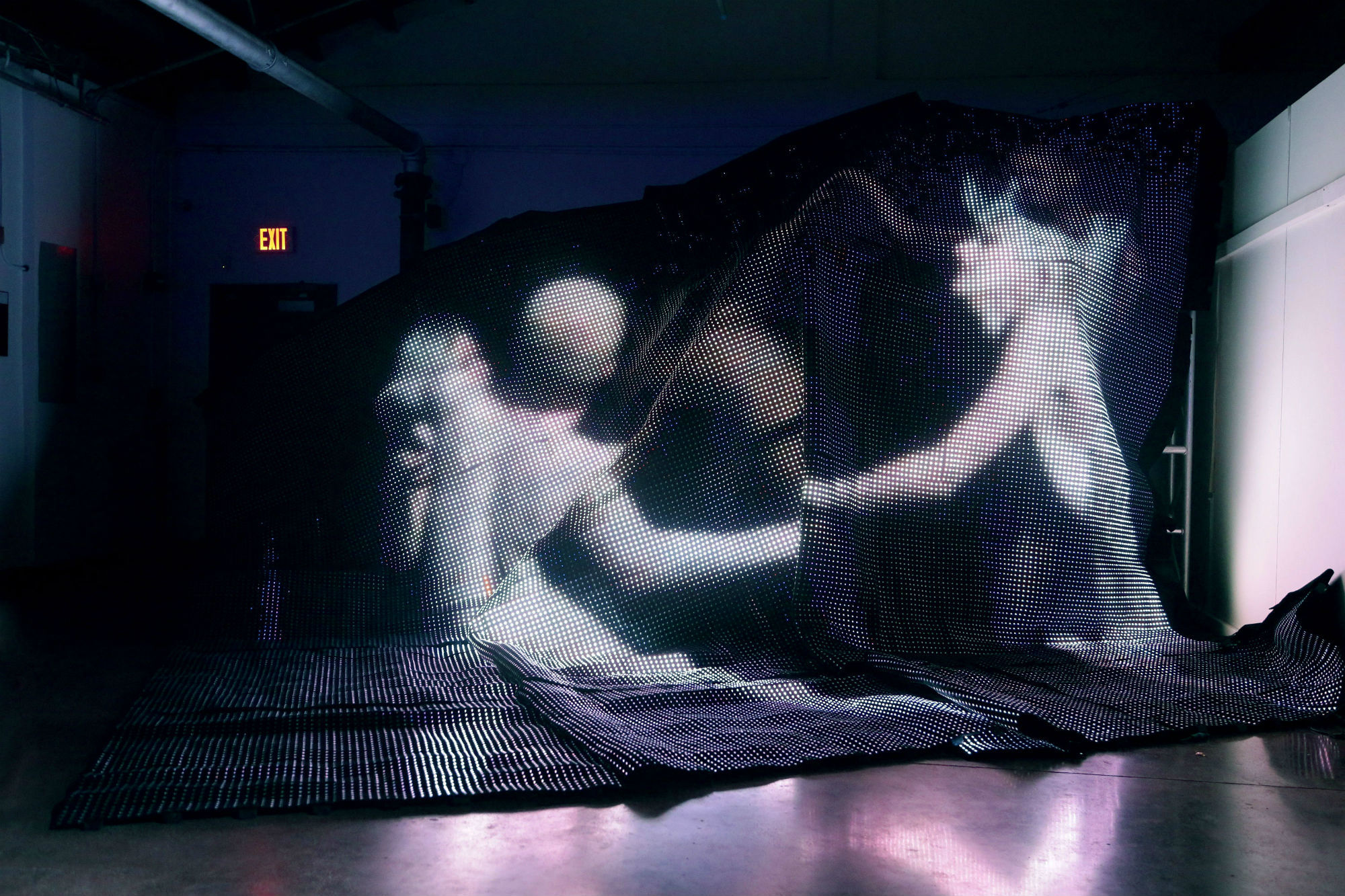This past weekend, Matthew Stone had Miami’s Wynwood Arts District buzzing. i-D Arts Editor Kathy Grayson’s The Hole Gallery and Ketel One Vodka called upon the longtime i-D collaborator to stage a performance of his traveling exhibition Other Worlds for a room of only 100 people. A hybrid electronic score (in part by Blood Orange’s Dev Hynes), video sculpture, and physical performance based on shamanic drum patterns and ritual movements, the piece’s pulsing drone sounds physically shook the entire building in one of the most visceral performances Art Basel Miami has seen all week. i-D caught up with the visionary artist to talk the body, the importance of collaboration, and why optimism still matters today. Here, the artist premieres a video of ‘Other Worlds’ staged at the Glyptotek Museum in Copenhagen, Denmark co-directed by Martin Garde Abildgaard.
Other Worlds from Martin Garde Abildgaard on Vimeo.
Can you tell us about Other Worlds?
It’s an ongoing experiment that I am developing. In one sense I am repeating the performance in different contexts, but there are key elements that change each time. This time I was able to include this idea I had for an LED video sculpture for a very long time, it’s like a draped video screen, that spills and unfolds like rich iridescent fabric. I’ve done a lot of stuff with images printed on fabrics that have been draped in the past; So this was the moving image version of that. The sculpture exists as both a backdrop and as lighting for the performative element of the piece. The majority of the duration of the performance takes the form of an electronic sound piece that I wrote and produced. It starts off as music and ends up as a pulsing drone. Dev Hynes contributed a separate composition to soundtrack the 40 second dance piece at the end.
My electronic score draws upon shamanic drum patterns, it’s a monotonous noise that ultimately functions as a sensory deprivation device. It puts the audience into a type of trance state or what some describe as a ‘shamanic state of consciousness’ — it is an altered brain state produced through repetitive sounds —and the vast majority of the performance is just the audience listening to that sound. Basically, what we have is a long repetitive electronic score with a 40 second live performance at the end.
What role will the body play in this version of the piece?
I’m working with a choreographer called Rosie Herrera as she has already been developing a dance piece that fits very neatly into these ideas of transcendent or altered states. We’ve extracted and developed one of the scenes from her existing work to use and adapt for this performance specifically. Rather than showing the dancers using movement to enter into a frenzied or altered state, we wanted it to appear that they had already reached it and were moving within a mystic experience. I am interested in the ways that the audience see and experience this short dance piece after listening to this mind-altering sound. I’ve always been interested in using the human figure to abstract things and push beyond it’s own physicality.
At last year’s Art Basel, you presented “Love Focused Like a Laser,” a hybrid performance opera that featured a really talented roster and this year you’re working with Dev Hynes. How important is collaboration in your work?
It’s funny, because recently I’ve been making these photographs that look so much like paintings that its hard for people to understand that they might actually be photographs, and they are the first things I’ve been making that haven’t been directly collaborative. I feel like collaboration is something that’s very hard to separate from my work in a practical sense. On a very basic level, I love people; I really enjoy working with people and I feel like I’m good at it. I’m good at bringing people together, I’m good at creating situations where people can work together or where interesting things happen. Some people hide it when they get help, but I’ve found that the more that I expose those interactions, the more that I credit other people, the more I cement a unique identity for myself. It is like an inverted mathematics, where the more I accurately credit people for the things that I’m involved in making, the more people still those collaborative elements as being intrinsically linked to my work and that whole dynamic as being an interesting component of who I am. All of that said, I have become more and more hermit-like.

Your work often considers themes of optimism, cultural rebellion, and the possibilities for intersection between them. Does Other Worlds approach those themes and if so, how?
“Optimism as cultural rebellion” was a sentence that I wrote in 2004 as part of a manifesto. At the time, it seemed completely impossible to make culture in a credible way, that talked about optimism. That initial sense of direct cultural rebellion has gone now. Since that time, a lot has changed; Obama’s ‘HOPE’ campaign is an interesting example of something that shifted the contemporary cultural language in that direction. My optimism is an attempt to describe the forces that entangles themselves with and then shape the future. So what I seek to describe is not only the belief that something else other than what already exists is possible, it is also in bed with the action that creates those new realities.
I do think it’s difficult to talk about optimism when things are the way they are in the world right now. But at the same time I still feel like its essential. The world has changed before and the world needs to change again. Optimism cannot just be the naive belief that everything will change if we just sit back and think happy thoughts, it has to be more dynamic than that.
Credits
Text Emily Manning
Images courtesy Ketel One Vodka
Video courtesy Matthew Stone, ‘Other Worlds’ at the Glyptotek Museum in Copenhagen, Denmark.’
Directors Matthew Stone and Martin Garde Abildgaard
Photography Thomas Jessen
Executive Producer Mikkel Grønnebæk
Post Production Søren Lindberg
Colourist Otto Norsker
Choreographer Louise Midjord
Dancers Emil Elg, Ane Carlsen, Teresa Fogh Schou, Kristian Skovgaard Andersen, Mette Valentin, Angela Krogsgaard, Liam Redhead, Ezra Shami
